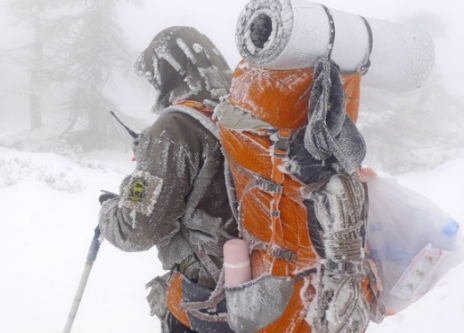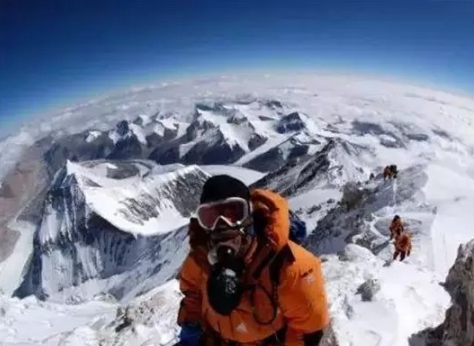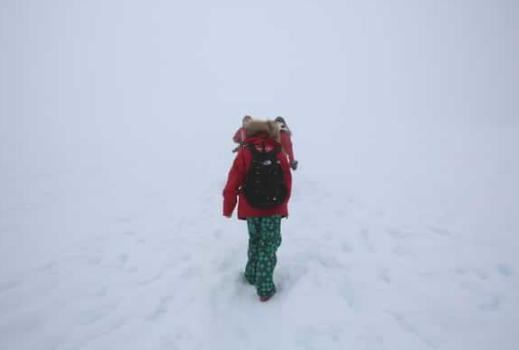Loss of temperature/ frostbite/ snow blindness

ã€Temperature loss】
The reason for the loss of temperature is: the higher the altitude, the greater the climate change, and the lack of proper thermal equipment, or long-term exposure to the harsh climate of the low-temperature environment, especially in the exhausted, wet clothes, will produce a decrease in body temperature The physiological response. When the body temperature drops below 35 degrees Celsius, the body has entered a state of deprivation. Symptoms of hypothermia include: feeling cold, pale skin, cold extremities, severe and uncontrollable trembling, ambiguous speech, uncontrollable muscles, unresponsiveness, altered or unreasonable temperament, slowed pulse, loss of consciousness, etc. Once the patient enters a degenerative condition, it may die within hours. In severe cases, the heart rate may be very slow, and the breathing may be subtle. Even if the breathing and heartbeat are stopped, the patient cannot be determined to have died and immediate treatment should be given immediately. The most important first-aid principle for the loss of temperature is to prevent patients from continuing to lose body temperature, and to gradually assist the patient in obtaining normal body temperature, taking the patient away from the harsh low-temperature environment and moving it into a warm tent or mountain house. Remove wet and cold clothing and wrap the patient in warm clothing, sleeping bags, etc. If the patient is conscious, he can be allowed to drink some hot and sweet drinks. If he is unconscious, let him lie in a restored position. Can be given to patients with thermos or rescuers with body temperature conduction to prevent the patient's body temperature from falling again. If the patient's breathing and heartbeat stop, he should start CPR and get a doctor as soon as possible. Remember not to drink to the patient, nor to wipe or massage the limbs of the patient, nor to encourage the patient to exercise.

Frostbite
The reason for frostbite is that the ends of the body's circulatory system, such as fingers, toes, ears, nose, etc., are exposed to ice or cold weather for a long time, or they are exposed to ice and snow, resulting in freezing damage to the skin or subcutaneous tissues. Symptoms of frostbite include: tingling in the affected area and gradual numbness, skin stiffness, pale or blue spots, difficulty or dullness of the affected area. At the beginning, it was frostbite in the skin or deep, and it was difficult to tell. The symptoms were similar. In addition, frostbite may be accompanied by a loss of temperature, and the latter should be dealt with first aid. If there is only frostbite, you should slowly warm the affected area to prevent deep tissue from being damaged. Move the patient to a warm tent or mountain hut as soon as possible, and gently remove the clothing and any restraints such as rings, watches, etc. from the wounded area. Use skin heat transfer to the skin, warm the affected area, or immerse the affected area with warm water. Frostbite ear, nose or face can be covered with warm towels. The temperature of the water should be acceptable to the wounded and slowly increase. If the affected area has restored blood and feeling within one hour, you can stop the "warming up" emergency treatment. Second, raise the affected area to reduce swelling. Wrap or lightly cover affected areas with gauze bandages or soft clothing. Unless necessary, try not to break the blisters or apply drugs. Get medical advice as soon as possible. In particular, care must be taken not to rub or massage the affected area, or to radiate heat to warm the affected area. After warming, the affected area should not be exposed to the cold again. Do not walk on the "thawing" foot.
ã€Snow blindness】

The cause of snow-blindness is because the eyes are exposed to the snow. The unprotected cornea is vulnerable to injury because the sun's reflection is very intense regardless of whether there is sunlight or not. If the sunny days are active in the snow , it is several hours. Serious snow blindness can be caused within it. The symptoms of snow blindness are very painful eyes, the eyes feel like sand filled with wind, red eyes, frequent tears, very sensitive to light, and even difficult to open the eyes, etc. If snow blindness occurs, the following emergency measures may be implemented: with cold water Or eye drops to clean the eyes, and secondly, apply eye masks or similar (clean handkerchiefs, gauze, etc.) gently to the eyes. Rest as much as possible to avoid using your eyes. If necessary, get medical attention. The symptoms of snow blindness usually take 5 to 7 days to clear.
Inflatalbe Pool,Swimming Pool For Kids,Double Summer Inflatable Swimming Pool,Summer Inflatable Water Swimming Pool
J&TZ CO.,LTD , https://www.inflatable-toy.com